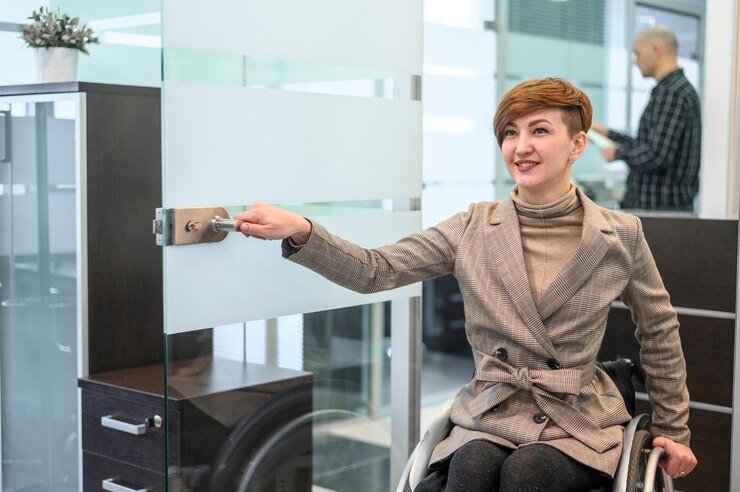Introduction:
Handicare chairs are widely recognized for their high-quality design and reliable performance, particularly in providing mobility assistance for individuals with physical limitations. However, like all complex devices, they can occasionally face operational issues. One of the most common problems users encounter is when the chair doesn’t move even though the power is on. This issue can be frustrating and concerning, especially when users rely on the chair for mobility. This article will explore potential causes for this problem, common troubleshooting steps, and solutions that can help restore the chair’s functionality.
1. Understanding Handicare Chair Functionality
Handicare chair issues doesn’t move power is on are powered mobility devices designed to aid individuals in moving around independently. These chairs use motors, sensors, and a battery system to provide movement, typically controlled through a joystick or remote. The chair’s mechanism is powered by electricity, with batteries providing the energy needed for operation. The power system is directly linked to the motor and the control system that ensures the chair moves in the desired direction. When the power is on, but the chair doesn’t respond, the problem may lie in the components that govern movement or in the communication between the control system and the motor.
2. Common Reasons for Mobility Failure Despite Power Being On
When a Handicare chair doesn’t move even though the power is on, there can be several reasons behind the malfunction. One common issue is a problem with the joystick or control panel. If the joystick or the controller is malfunctioning or not properly connected, it may send no or incorrect signals to the motor, preventing the chair from moving. Another potential cause is a motor failure or mechanical issue, where the motor may be receiving power but is unable to translate it into movement due to internal damage or a mechanical obstruction. In some cases, the problem may also lie in the chair’s battery, where a power issue exists despite the appearance of being “on.”
3. Checking the Battery and Power Supply
Even if the power indicator lights are on, a partially discharged or malfunctioning battery can result in the chair failing to move. Batteries lose their capacity over time, and if the chair’s battery is old or faulty, it may no longer supply enough power to the motor. Checking the battery level and ensuring it is fully charged is an important first step. If the battery appears charged but the chair still doesn’t move, it may be worth testing the battery with a voltmeter to ensure it’s delivering the correct voltage. Additionally, checking the power supply connections to ensure they are secure and free from damage can help eliminate any electrical issues as the cause.
4. Inspecting the Joystick and Control System
Another major culprit in Handicare chair movement issues can be a malfunctioning joystick or control system. The joystick or remote control is responsible for sending signals to the chair’s motor to initiate movement. If the joystick is not working correctly due to wiring issues, dirt, or internal component failure, the chair will not respond even though it appears to be powered on. Inspecting the joystick for physical damage, ensuring that all connections are intact, and cleaning any dirt or debris that may be interfering with its operation is an important step. In some cases, recalibrating or resetting the control system might also be necessary.
5. Motor and Mechanical Obstructions
If the battery and joystick appear to be functioning properly, the next area to check is the motor and any potential mechanical obstructions. A Handicare chair’s motor is what converts the electrical power into movement. If the motor is malfunctioning, whether due to wear and tear, electrical failure, or a mechanical jam, the chair will not be able to move. Before attempting to troubleshoot the motor, make sure that the chair is fully powered off to avoid electrical hazards. Check for any visible damage to the motor, any loose parts, or debris caught in the wheels or mechanism that might prevent movement. Sometimes, a simple clearing of obstructions is all it takes to restore mobility.
6. Resetting or Recalibrating the Chair
Sometimes, electronic issues can cause a Handicare chair to stop functioning properly, even if the power is on and no obvious physical issues are present. A reset or recalibration of the chair’s control system may be needed to restore its functionality. Many models of Handicare chairs come with a reset button or procedure that involves powering off the chair, waiting for a short period, and then powering it back on while holding down certain buttons to reset the system. This process can often resolve minor software glitches that are preventing the chair from responding to commands.
7. Seeking Professional Help and Support
If troubleshooting steps like checking the battery, joystick, motor, and recalibration do not resolve the issue, it may be time to consult a professional technician. Handicare chairs have intricate electrical systems and specialized components, which can require expert knowledge to repair. Attempting to fix the chair yourself without the proper tools or expertise can result in further damage, especially if the chair is still under warranty. Contacting Handicare support or a certified technician for an in-depth diagnostic is the best course of action when all else fails. They can assess the problem and offer solutions such as replacing faulty components or performing repairs.
8. Conclusion
In conclusion, when a Handicare chair does not move despite the power being on, there are a variety of potential causes, from power issues and battery failure to problems with the joystick, motor, or mechanical components. By systematically troubleshooting these areas, users can often identify the issue and resolve it without the need for professional help. However, if the problem persists, contacting customer support or a technician is advisable to avoid further complications. By taking care to maintain and regularly inspect the chair, many of these issues can be prevented, ensuring that the chair remains a reliable tool for mobility and independence.

